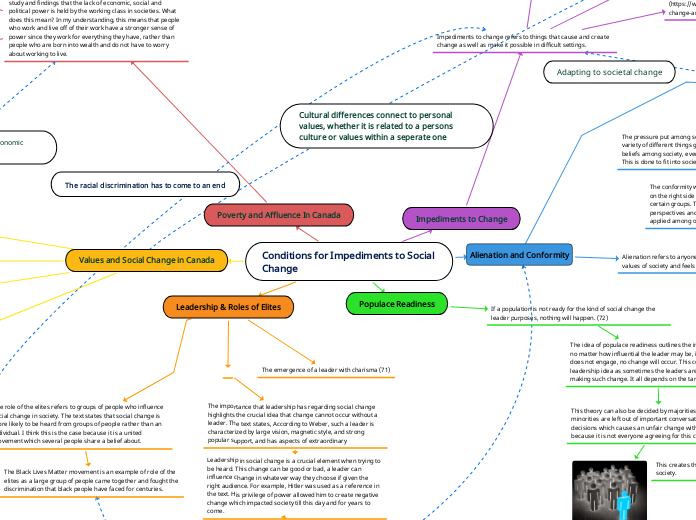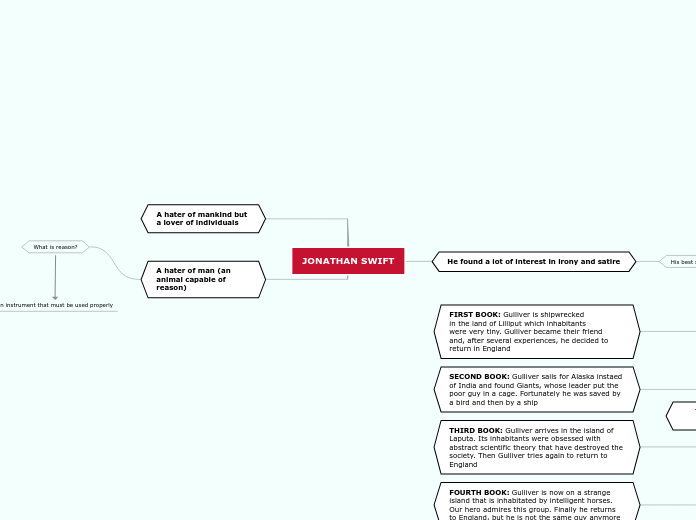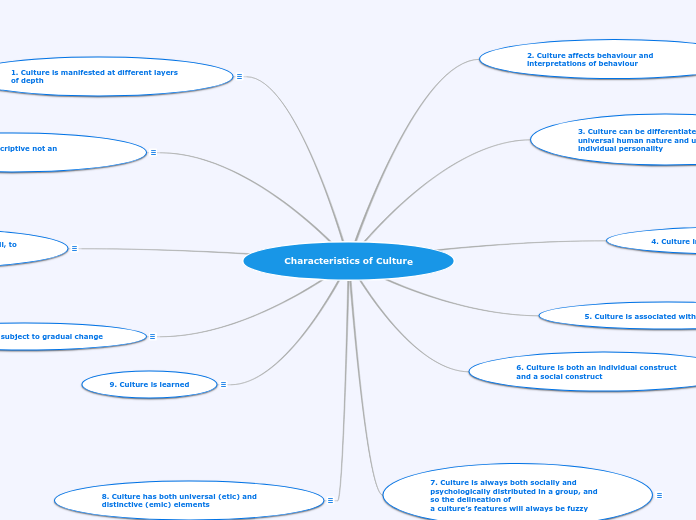Beliefs and values go hand in hand.
Opposites
Adapting to societal change
Cultural differences connect to personal values, whether it is related to a persons culture or values within a seperate one
Values which people have reflect off of their economic status and work ethic.
The racial discrimination has to come to an end
During the peak of the Black Lives Matter movement, some people saw it as a trend, and started fitting into 'societal norms' such as posting awareness, resulting in conformity.
Conditions for Impediments to Social Change
Values and Social Change in Canada
Regarding women in the workplace, the graph on page 91 demonstrates stats which show how many women compared to men are working in counties such as Japan and Canada. In 1980, Canadian women stats were at 50.4% and climbed to 57.6% in 1992. This indicates that change was made which influenced women's choice to go back to work.
The text speaks about the employment equality act, which clearly from the title of it is promoting and encouraging equal pay for both genders and all races. The route of this issue was from systematic discrimination. People of visible minorities such as women and people of colour were not given equal pay which was challenged when it was realized this should be an important aspect to put our values towards to create a form of social change.
Some values of Canada that were needing to be changed are but not limited too; gains for women, the employment equity act, environmental change, etc.
Values and social change in Canada change very frequently as priorities change so often.
The reason for the frequent changes is that different priorities become known and overtake previous changes that need to be done. These values differ depending on income, weather, etc.
Poverty and Affluence In Canada
Poverty and affluence in Canada refers to the psychological study and findings that the lack of economic, social and political power is held by the working class in societies. What does this mean? In my understanding, this means that people who work and live off of their work have a stronger sense of power since they work for everything they have, rather than people who are born into wealth and do not have to worry about working to live.
According to the charts on page 83 indicate the extreme income differences that are listed among some of the following groups; people of colour, single income homes, dual income homes, age varieties, etc. The differences in these incomes are vastly different due to ability and discrimination against people of visible minorities.
When approached with this explanation, my mind wandered to the topic of gratefulness. From experience, working and making your own money makes you appreciate it much more and influences your habits as you understand the amount of work that goes into making a living.
These beliefs highlight the fact that there will always be inequality and diversity in all communities, and this is a a beneficial element to grow. Societies are made of all types of people and if everyone was the same and made the same type of living, the world would just be boring.
Impediments to Change
Impediments to change refers to things that cause and create change as well as make it possible in difficult settings.
The majority of the obstacles that take place come from citizens refusal to accept things that are new. Stuck in the mind set of 'it has always been like this', no change can occur from that as it limits any important social change and promotes discrimination and holds a community back from growing.
Real world examples: governments not fulfilling promises (infufficient leadership), lack of inclusion when it comes to groups of visible minorities (resistance to change).
The text states that many impediments to change could result from cultural differences that some people may not be open to accept. This falls under resistance to change as a person is stuck in their own ways and refuse to accept that any other way is right or better than their own.
The six barriers to social change include; a lack of clear definition, prioritization problems, insufficient active leadership, resistance to change, poor communication, lack of government changes and alterations, (https://www.imaworldwide.com/blog/the-top-6-barriers-to-change-and-what-changeagents-can-do-about-them )
Alienation and Conformity
Conformity is known as the opposite of alienation; this can be referred to as peer pressure from those around you, whether you know them or not.
The pressure put among society to believe and support a variety of different things greatly influences opinions and beliefs among society, even if the person does not fully agree. This is done to fit into society without judgement and fear.
The conformity within society is everywhere in life, from driving on the right side of the road to changing morals to fit in with certain groups. These influences have the capability to alter perspectives and opinions just as a result of the pressure applied among outsiders.
People tend to adopt the values of society in which they live.(78)
Alienation refers to anyone who does not share the major values of society and feels like an outsider.(77)
Alienation can include visible groups of minority who do not share common values which are accepted within society. These differences can influence these people to form groups which can be referred to as gangs, they can join cults and any other group which goes against societal norms.
These people are often feared because of their different beliefs and their willingness to display their differences.
The constant shunning and disapproval from those around them can lead to them committing crimes and getting in trouble with the law because of their outsider opinions.
Populace Readiness
If a population is not ready for the kind of social change the leader purposes, nothing will happen. (72)
The idea of populace readiness outlines the importance that no matter how influential the leader may be, if the population does not engage, no change will occur. This contradicts the leadership idea as sometimes the leaders are not capable of making such change. It all depends on the target audience.
This theory can also be decided by majorities. Traditionally, minorities are left out of important conversations and decisions which causes an unfair change within society because it is not everyone agreeing for this change to occur.
This creates the illusions and perceptions of outcasts in society.
Leadership & Roles of Elites
The emergence of a leader with charisma (71)
The role of the elites refers to groups of people who influence social change in society. The text states that social change is more likely to be heard from groups of people rather than an individual. I think this is the case because it is a united movement which several people share a belief about.
The Black Lives Matter movement is an example of role of the elites as a large group of people came together and fought the discrimination that black people have faced for centuries.









